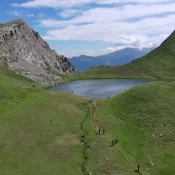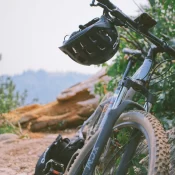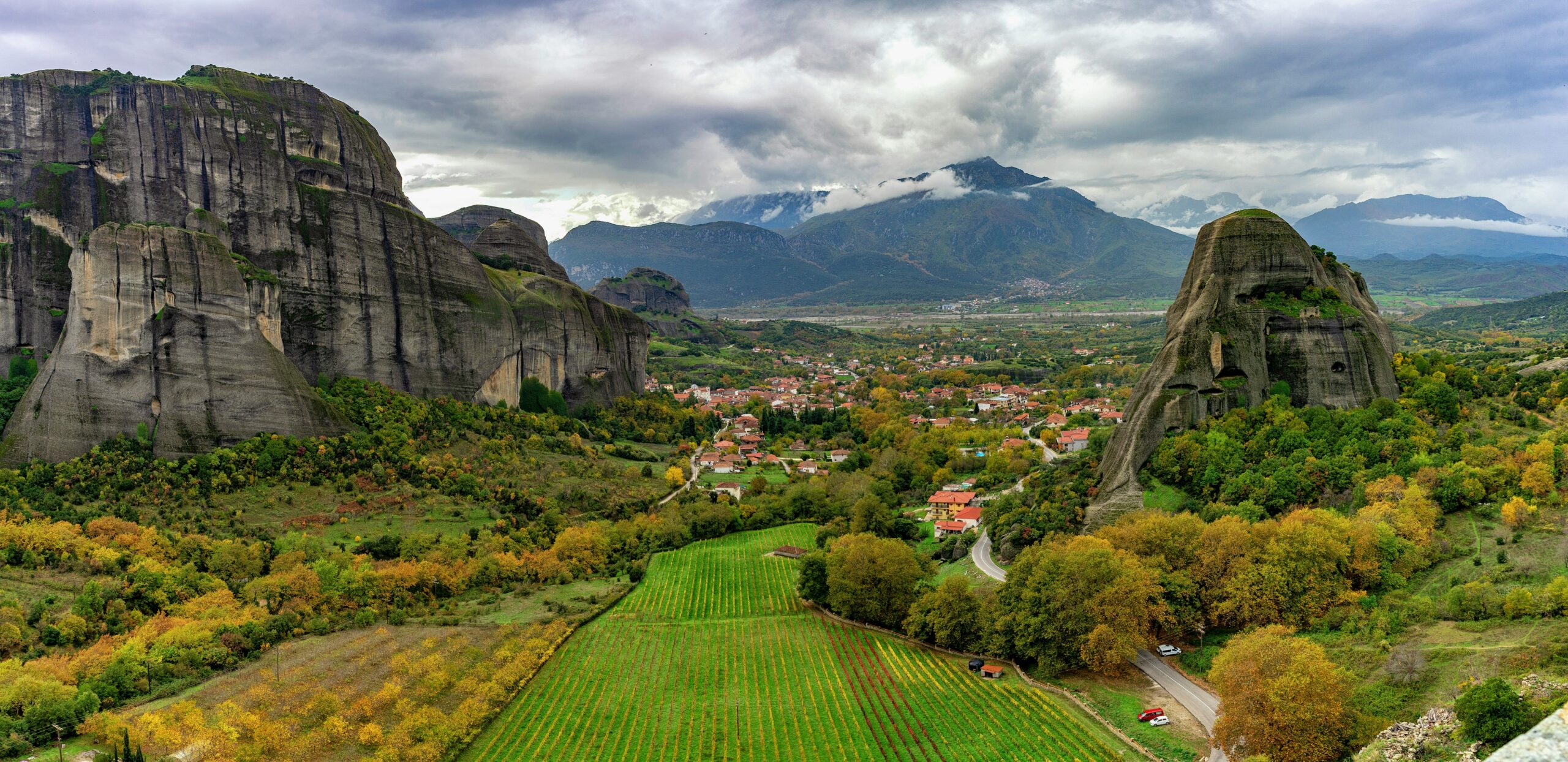
Meteora
Greece is a blessed place that offers visitors unique morphological landscapes.
One of them is located in the region of Thessaly specifically in its northwestern part. Giant rocks rise that create a beautiful and rare landscape in the world and this is Meteora.
On these huge rocks are the buildings of the monasteries that look like a natural continuation. From afar the impression is created that if someone is on them, he is allowed to touch the sky.
The name Meteora is attributed to the founder of the Great Meteoron monastery, Saint Athanasios the Meteorite. He named “Meteoro” the Wide Stone on which he first climbed in 1344.

As a rock phenomenon, it is not mentioned either in mythology or by any Greek or foreign historian.
In the last thousand years, historians and geologists began to deal with the creation of these rocks, formulating various theories.
Many stories, with the most prevalent being the German geologist Phillipsson. He was found in the area of Meteora in the late 19th century.
His basic theory is that at this point there was the mouth of a large river.
For millions of years, it was covered by a narrow and deep sea section. The waters of the river deposit sediments and stones in the estuary and generally various materials. They were transported with its waters from northern parts of primordial central Europe. From the accumulation of these materials, ketogenic cones were formed.
Over the years and 30 million years ago, many geological changes occurred. The central part of today’s Greece was raised. The area of Thessaly, which was a lake, sank. Later, the opening of Tempi was created, resulting in the water spilling. It was spilling into today’s Aegean Sea and revealing the plain of Thessaly.
During the tertiary period, the solid volumes of “rocks” were cut off from the Pindus mountain range. And over the centuries the valley of the Pinios River was formed between them.
With continuous erosion by winds and rains, as well as other geological changes, these rocks took their present form.
The complex of Meteora consists mainly (up to 95%) of pebbled sandstone. And conglomerate of the Oligocene and Miocene, and the rest are mainly coarse sandstones.
Meteora today has the form of steep peaks with a height of more than 200 meters and a width of up to 300 meters. The average altitude is 313 meters. Inside these rocks is the Theopetra Cave.
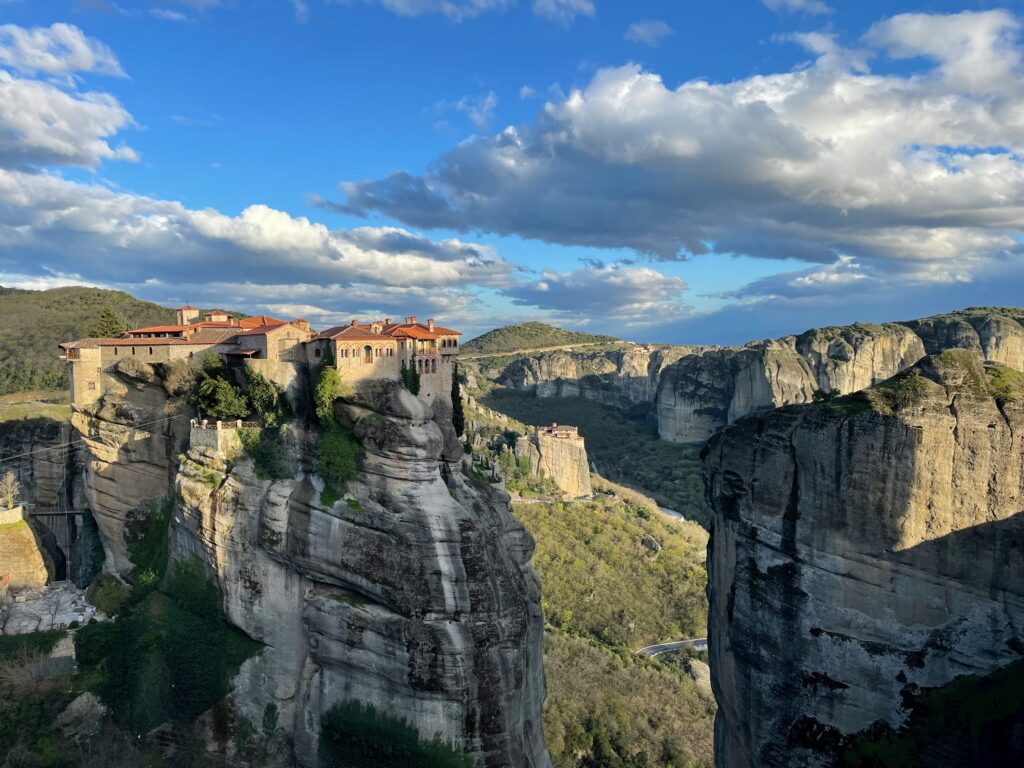
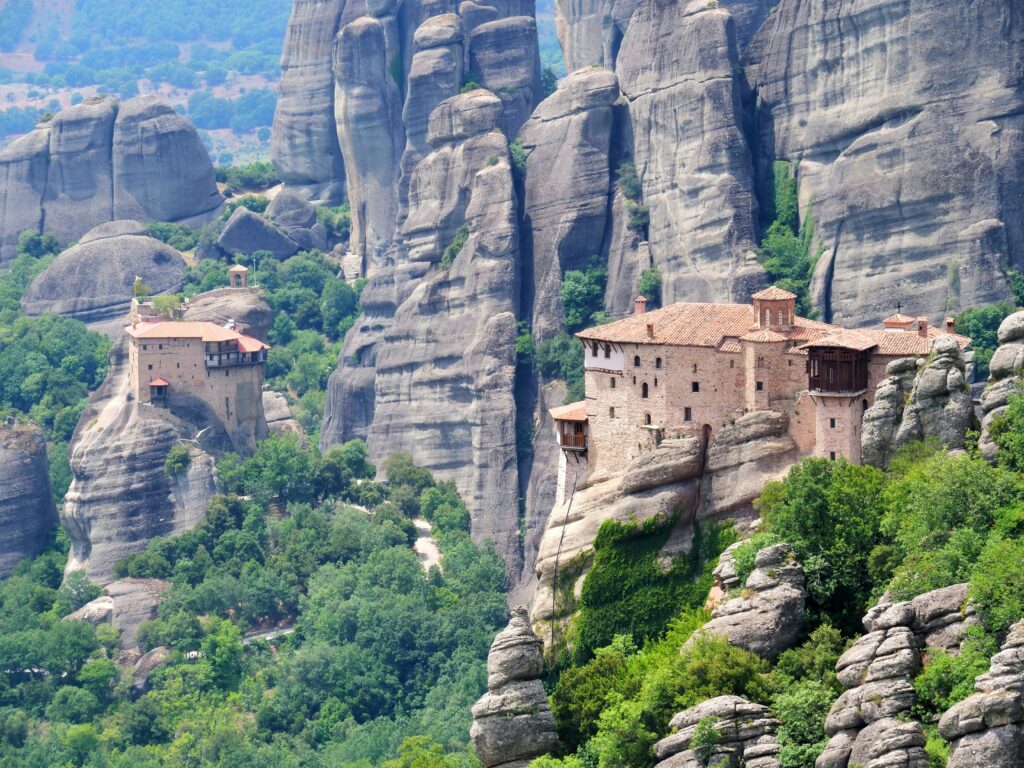
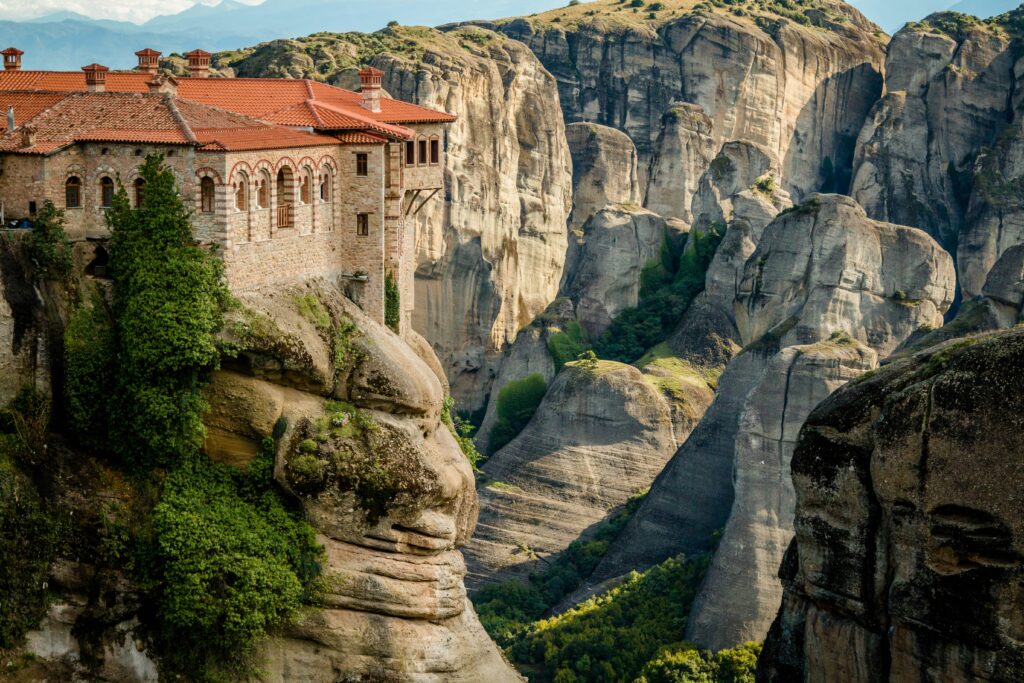
Their habitation.
As a fertile place (valley) with many waters, it was accessible and visited since ancient times, created the conditions for the conquerors, and the various invaders to easily destroy and kill the local population.
Thus, in the cavities of the rocks, in their crevices and on their tops, the people of the area found protection.
Over the years and religions in Greece and as an inaccessible place, many daring hermits and departers found refuge who sought peace of mind, serenity and with prayer sought Christian perfection.
The monasteries of Meteora, built on the tops of some of the rocks, are today the second most important monastic complex in Greece, after Mount Athos.


In the beginning the ascetics were isolated and prayed in small chapels, their life was frugal and the work arduous.
The ascent was initially done with wooden ladders that were wedged in holes in the rocks and nets.
The exact date of when they were inhabited is not known, but according to the scriptures that exist, monasticism is presented when it was organized.
The first ascetics must have taken refuge in the rocks towards the end of the first millennium. The first ascetic is mentioned as Barnabas around 950-970 AD, who founded the Skete of the Holy Spirit and followed by the foundation of the Skete of Transfiguration by the Cretan monk Andronikos in early 1000 AD. Then the Skete of Stagi or Doupiani is founded around 1150-1160 AD.
The area and monasteries of Meteora are included in the World Heritage Sites, because they are a unique harmonious combination of Byzantine architecture and natural beauty. The buildings of the monasteries appear as a continuation of the rocks, as a natural end. Also because it is a priceless artistic and heirloom treasure.
The maximum number of monasteries of the monastic community was 24, these were the Holy Spirit, Agios Modestos, the Alysos of Apostle Peter, Agios Ioannis Prodromos, Agioi Taxiarches, Agios Georgios Mandilas, Agios Dimitrios, Agios Antonios, Agios Athanasios, Panagia, Agios Nikolaos Badovas, Agios Nikolaos Kofinas, the Transfiguration of the Savior, the monastery of Varlaam, Agios Stefanos, Agia Triada, Agia Moni, Rousanou, Ypapanti, Pantokratoras, Kallistratou, Ypsilotera or Calligraphers, Agioi Apostoloi and Agios Nikolaos Anapafsas.



According to tradition, as early as the 9th century the first ascetics came to Meteora. At first they lived alone in caves. Later we have a first form of organization, the cloisters and then the communes are created.
In the course of time, with the writing of the history of Meteora between 1520 and 1530, most of the 24 monasteries had already been destroyed.
However, from the end of the 15th century and especially in the 16th century, Meteora experienced its greatest prosperity, as new monasteries, catholic and monastic buildings were founded, which were adorned with hagiographies of unparalleled art.
This situation was the same until 1490 with the metropolitan of Vissarion I and Vissarion II, who made many efforts to reorganize monasticism in Meteora.
Meteora will be followed by a period of prosperity, during which coding schools operate in Meteora. Thus, many educated monks were engaged in copying manuscript codes. At the same time, the monasteries are embellished, the catholics are painted and generally there is great building activity.
At the beginning of the 18th century, Meteora became a prison and a place of exile for those condemned by the Ottoman Government and as a result they declined again.
In 1920 in Meteora, stairways and tunnels were carved into the rocks, making the monasteries accessible from the neighboring plateau, so the traditional method of communication and supply of the monasteries with rope ladders, ropes, pulleys and baskets was gradually abandoned.
In 1948 an asphalt road was constructed and the inaccessible area for women was abolished. Today, although Meteora is a tourist area, monasticism flourishes and many young pious and educated people come to live in the 6 monasteries that survive and operate.
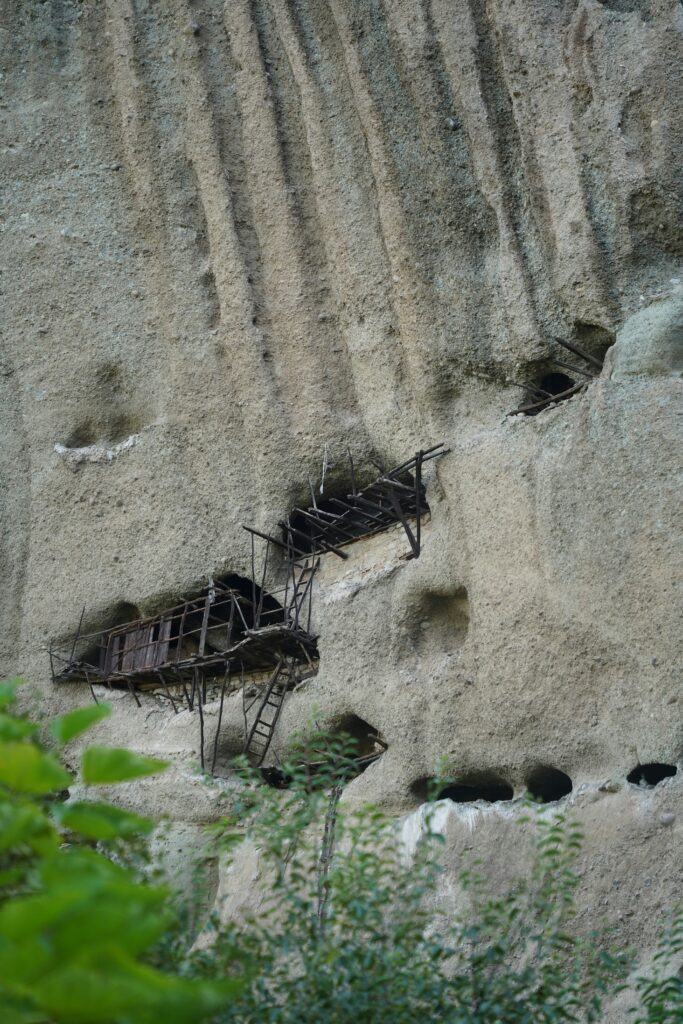

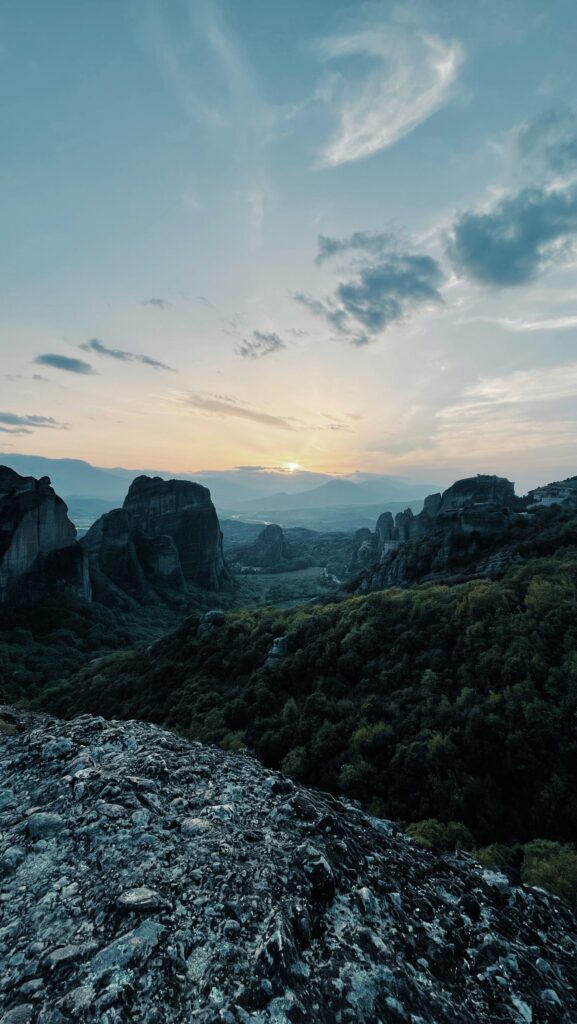
All the monasteries of Meteora operate as communes, that is, they are all common. There is a common table (food) for all monks. No one has money. The fund is common, but responsible for it is the abbot, who cares with love for the whole brotherhood of the monastery.
The life of the monks and the difficulties they face are many.
Monks try to adhere precisely to three basic rules of monasticism: chastity, landlessness and obedience.
They wake up at 3.30 a.m. and pray individually in their cell until 5.00 a.m. From 5.00 a.m. to 7.30 a.m. the services of Midnight, Matins and the Hours take place in the church. They pray and fast according to the canons of the Orthodox Church.
The work undertaken by the monks is called ministries, because they are done in a spirit of love and sacrifice, but also with much reverence and prayer.
The alternating ministries are of the church, the guesthouse, the kitchen, hagiographies, needlework, gold embroidery, sewing, incense and candle making.
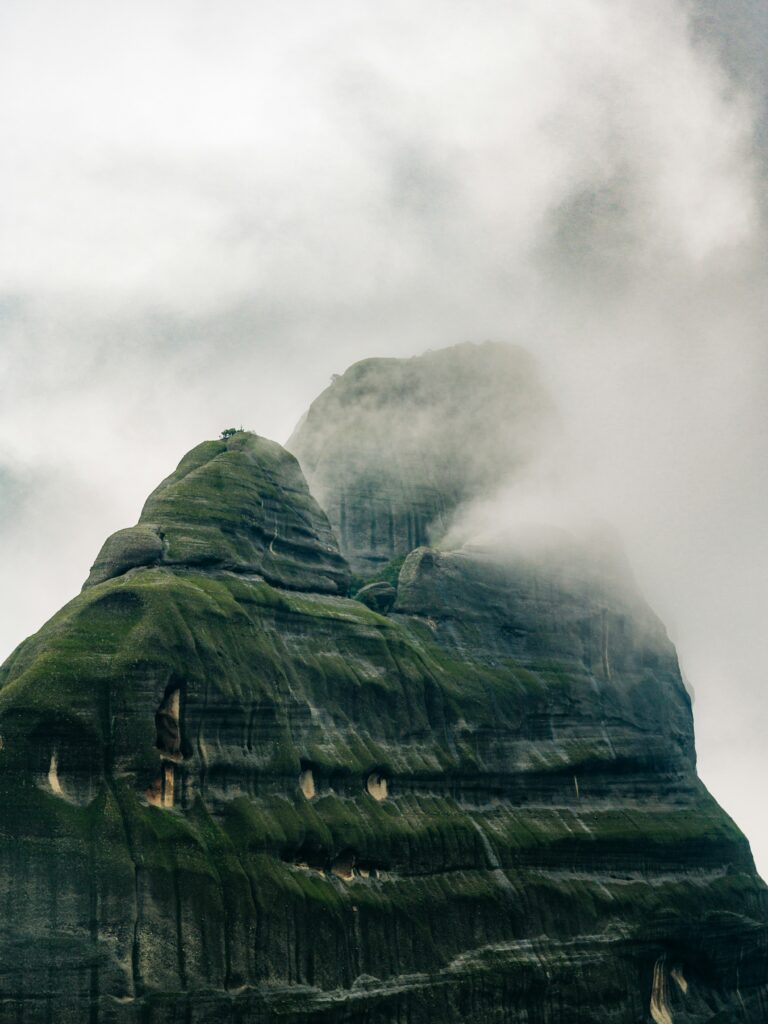
The contribution of the monasteries of Meteora to the cultural heritage is very important at all levels
The manuscripts, printed matter and documents preserved in the monasteries are an inexhaustible source of information, both for the ecclesiastical and the national history of Greece.
Great Meteoron Monastery (Transfiguration Monastery): it is a boys’ monastery, the oldest and largest of Meteora, which marked the organized life in Meteora. Perched on the most imposing rock, it holds a leading position in the monastic complex, while it is also the main museum for visitors.
Agia Triada Monastery: The “tallest” and most inaccessible monastery of Meteora, which can be reached after climbing 140 steps carved into the rock. The magnificent view of the valley of Kalambaka and the Pinios River in what is impressive one sees from here. It is the third oldest monastery of the complex, as it is estimated that the first hermits built here in the early 14th century.

Meteora is a protected habitat of the Natura 2000 network
The area is important for the reproduction of avifauna, and includes populations of protected species such as the Egyptian vulture, owls, eagles and other birds of prey.
Climbing as the most important and integral activity in the area is a very old affair.
The story mentions in the times of ancient Aeginio the inhabitants of the area took refuge in inaccessible rocks to protect themselves from the attacks of various robbers and pirates of the time.
During the 9th century. A.D. many caves of the rocks were converted into cloisters by the ascetics of the time. Many of them require some kind of climbing for their approach.
From the founder of the Holy Monastery of Transfiguration, Athanasios Meteoritis, we learn that he and two other monks and the help of a man trained in climbing the rocks, who was paid for his services, climbed the rock of Platis Lithos.
Among the climbing discoveries, we find evidence of ascents on very difficult rocks even by today’s standards.
The wood wedges in rock crevices in Doupiani, Agioi Taxiarches and the tower of Metamorfosi are some of the elements for the history of climbing in the area.
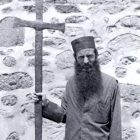
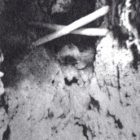
On the rock of Alyssos, it is reported that the first person who attempted the first ascent was forced to climb a difficult climb with a degree of difficulty V+ in a “chimney” on the north side of the rock, which even today is considered one of the most difficult rocks to climb.
The metal cross located on the top of the Holy Spirit is reported that in the 14th century AD Serbian tsar Stefan Dušan ordered his soldiers to place on top of its rock a metal cross of dimensions.
The team that raised the cross climbed a route with a degree of difficulty again V+.
Also, customs such as the ascent to Agios Georgios also show us the connection of the local population with the ascents to the rocks.
In more modern history and until the 1960s, the then community of Kastraki rented the tops of the rocks to locals, who after difficult climbs raised the then numerous flocks to graze the rich grass that exists there such as the area of Sourloti, Modi and others.
Let’s not forget the Second World War when during the German occupation, soldiers climbed the Agia and placed the German flag.


The great rise of climbing comes in 1970, initially with climbers Bodo Zoephel and Uwe Weinreich climbed the tower of NE Arbutus, the tower of Geraki and the shoulder of Meteora, and in 1975 the people who changed history Dietrich Hasse together with his friend professional photographer-mountaineer Heinz Lotar Stutte.
These people change the history of sport climbing by opening more than 200 routes and climbing all 100+ towers of the field.
This achievement is extremely difficult since these were done during their holidays, at a time when Greek mountaineering was still in its infancy.
Alyssos is a rock-legend, due to its shape and, although there was an old monastery, its conquest was considered a great feat.
Hasse and Stutte publish the first climbing guide and the first visits of climbing tourists to the site begin.
At the same time, however, with the German climbers, local young people seeing them were motivated and came into contact with them starting the first climbs.
Among the locals are Tzelios, the brothers Skarlatos, Athanasiou who, led by the German-speaking Aris Mitronatsios, reached a very high technical level
In the 80s, visits by Greeks and foreigners to the field increased. The tourist flow for climbing in METEORA increases sharply.
In 1985 the Meteora Climbing Fun Club was created in Germany and Austria by Hasse and Stutte. A club to which you gave a certain amount of money and you could get insurance worth twice the amount you offered, for opening routes in Meteora.
In 1986 the 2nd climbing guide is published by the two Germans.
In the same year, the 1st Pan-European Climbing Meeting was organized in Meteora, with the participation of top climbers of the time.
In 1989 the Mountaineering Club of Kalambaka was founded. The club includes in its bosom all the old climbers of the area. Through schools that were created, many young people learned the sport and strengthened the club.
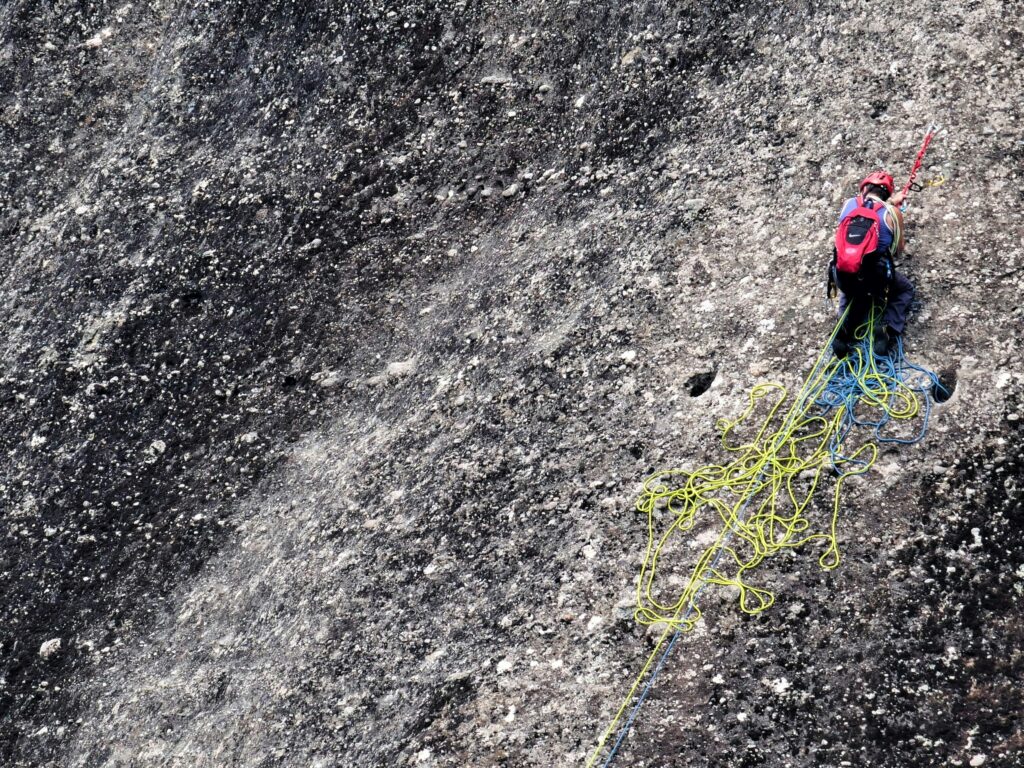
In 2000 the 3rd climbing guide was published again by Hasse and Stutte, the swan song of the two great climbers, who (now older) hand over the field to the hands of the youngest but equally active climbers of the Port Authority. The 100 towers and about 700 routes create a completeness for the climber of any level visiting the field. .
The circular, towering and inaccessible rock of Alysos or Altsos, as it is called by the locals, is located north of Kalambaka in front of Modi rock. It covers an area of about 15 acres and its height on its north side rises to 145 meters, while on its other sides it reaches up to 230 meters. It took its name from the monastery of Alyseos, which had been founded on it during the Byzantine period, which was dedicated to the holy chain with which the Apostle Peter was tied during his imprisonment in Jerusalem
Climbing
Meteora has dozens of climbing routes, many of which are quite difficult and challenge even for the most experienced of the sport. This is the reason why Meteora is one of the most popular climbing destinations. And of course every climber wants to feel the unique feeling of climbing such a unique landscape.
Other activities in Meteora
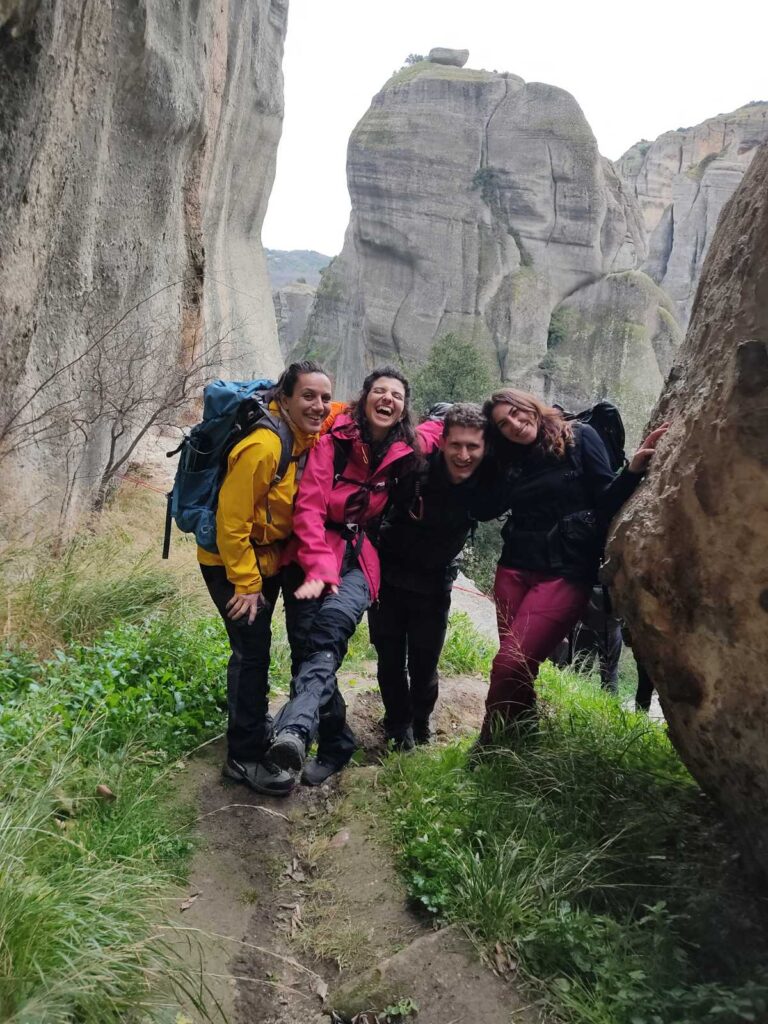
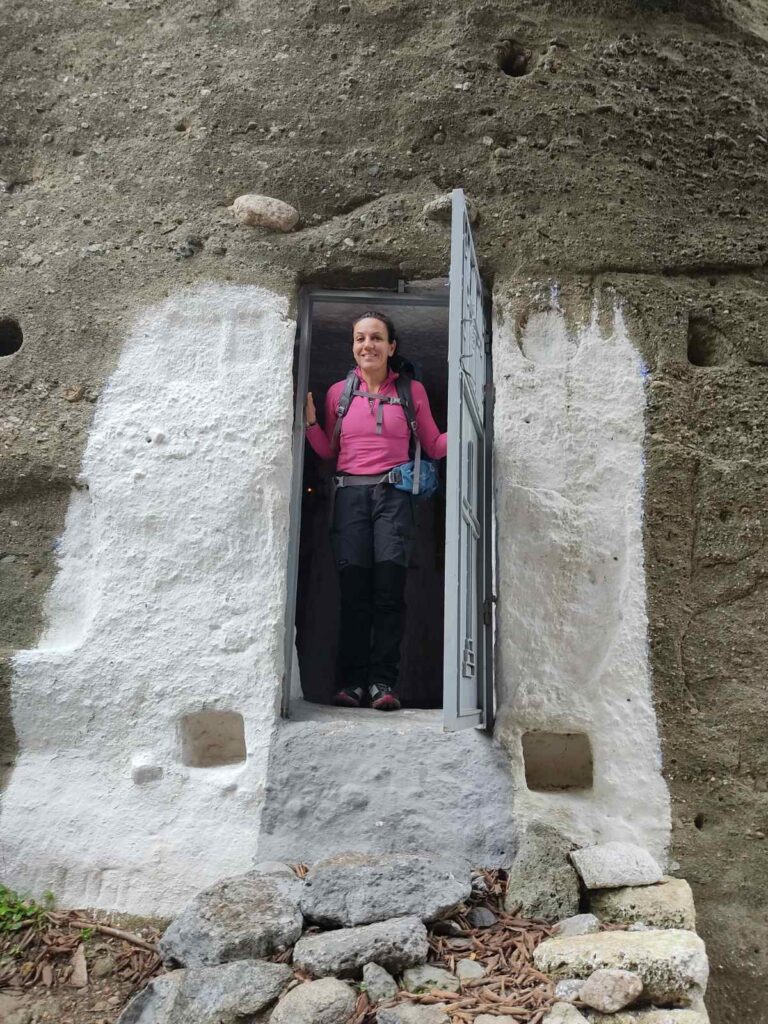
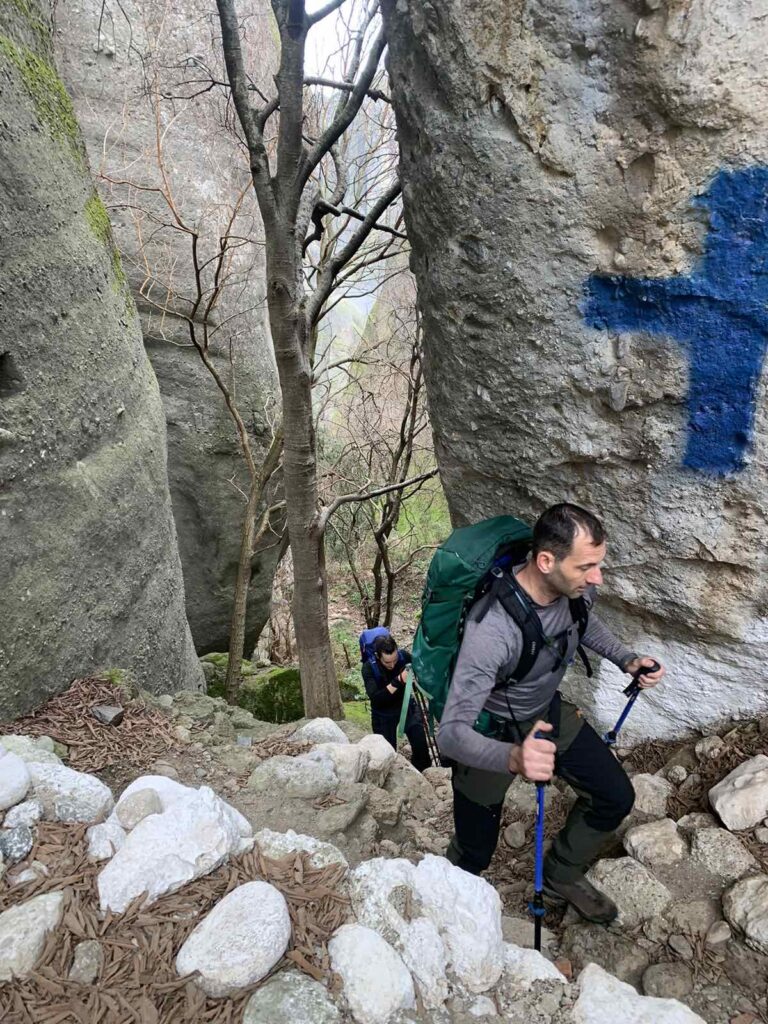
Hiking
With a huge network of corridors the visitor can choose what suits him or wants to do more.
A nice route is the one that leads from Kastraki to the Monastery of Ypapanti and it is definitely worth the path from the monastery of Agios Nikolaos Anapafsas to the Monastery of Varlaam and the Great Meteoron.
Rappeling
In various places throughout the area there can be descents with the technique of rappelling, one of the most famous is on the rock of Doupiani.
With a short hike that starts from Kastraki and follows the path of the monks, the visitor suitable for this and after his training will make a descent about 20 meters high.
Upon completion of the activity, he returns again to the center of the village.
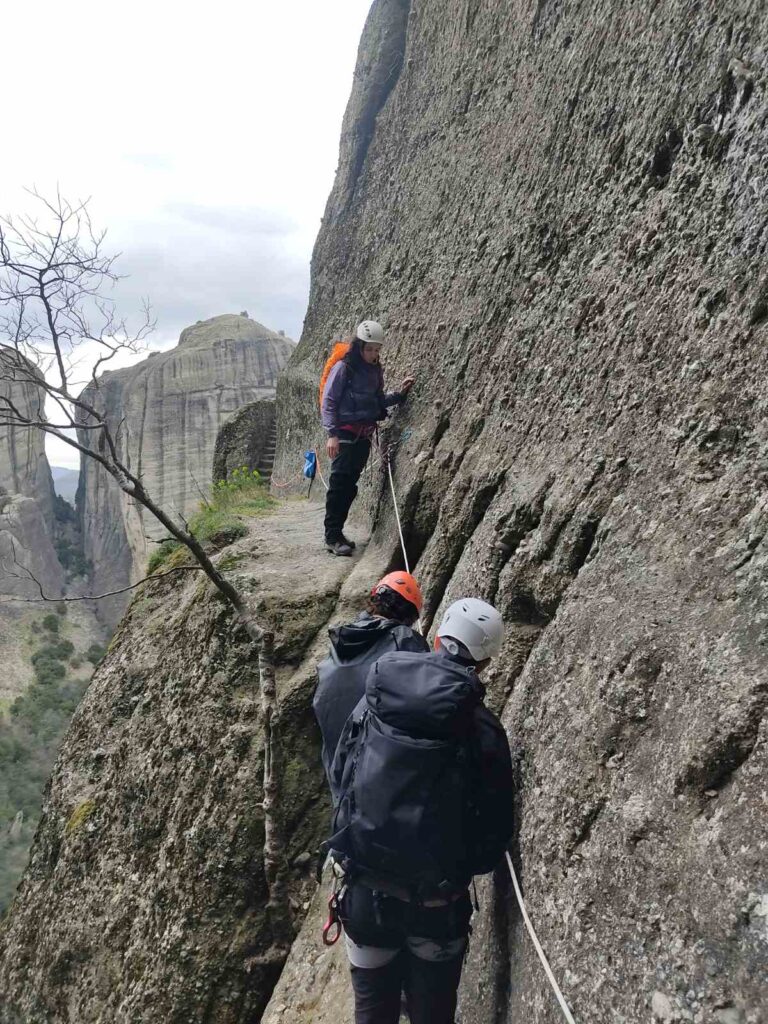
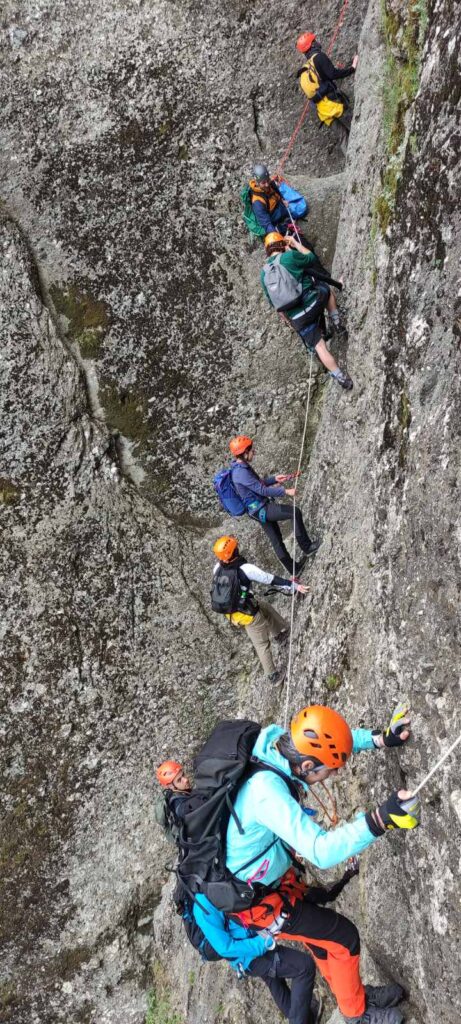
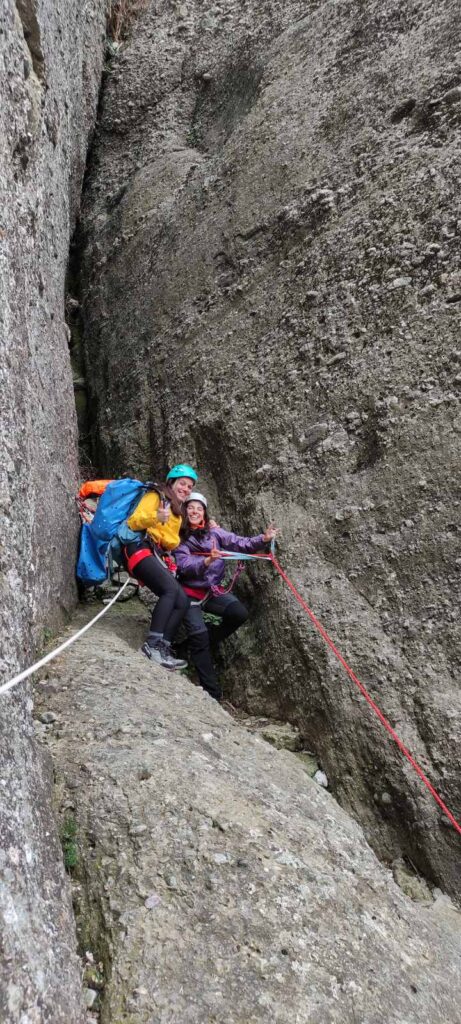
Via Gordata Meteora
An impressive activity that raises adrenaline and is for everyone is Via Gordata The signatory of the above article ( Peponakis Vasilis )is one of the two in Greece that through the company Boa Base Outdoor Activities provides visitors to the area the extension route (longer and more difficult).
But about Via Gordata Meteora we will write in another article.
Food and drinks
You will find options for accommodation and food in Kalambaka and Kastraki.
Article Sources
www.kalampaka.com/el/meteora/history/
www.wikipedia.org/wiki/%CE%9C%CE%B5%CF%84%CE%AD%CF%89%CF%81%CE%B1
www.kalampaka.com/el/climbing-in-meteora/
Tags


